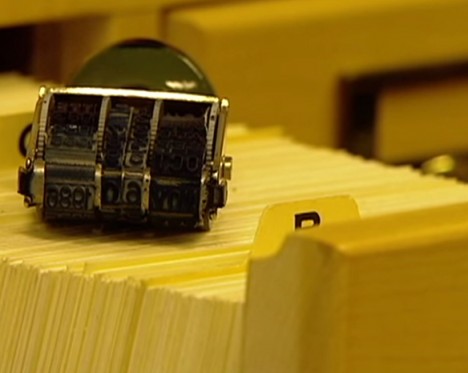$ (document).ready(function() { SampleGalleryV2({“containerId”:”embeddedSampleGallery_3871588870″,”galleryId”:”3871588870″,”isEmbeddedWidget”:true,”standalone”:false,”selectedImageIndex”:0,”startInCommentsView”:false,”isMobile”:false}) });
Leica is getting into the lens resurrection game, announcing earlier today that it will bring back the Thambar-M 1:2.2/90: a portrait lens from 1935 that’s famous for exceptional spherical aberration that creates extremely soft images. The Thambar-M will be an accurate reproduction of the original lens, only this time around in the M mount instead of the L screw mount.
The lens features a 20-bladed iris that produces round, out-of-focus highlights, and only four elements arranged in three groups. Its softness comes about through uncorrected spherical aberrations that are more obvious when the lens is used wide open, and which can be emphasized via the use of an included centre spot filter that prevents axial light passing through the construction.
With the light from the centre of the lens blocked, the majority of image recording light comes from the edges where the aberration is at its strongest.
$ (document).ready(function() { SampleGalleryV2({“containerId”:”embeddedSampleGallery_1148566037″,”galleryId”:”1148566037″,”isEmbeddedWidget”:true,”standalone”:false,”selectedImageIndex”:0,”startInCommentsView”:false,”isMobile”:false}) });
Without the centre spot filter the lens is still soft, but becomes sharper as the aperture is closed and the aberration subsides. The barrel of the Thambar has twin aperture markings that show in white the reduced aperture values when the spot filter is used, as well as the recommended range of apertures that can be used with the filter in place.
Originally made only in a run of 3,000 in 1935, this new version will be much more widely available starting mid-November, and will cost you £5095/$ 6495. For more information see the Leica website, or read this article on the Leica blog.
Press Release
Leica Camera AG presents a modern renaissance of the classic lens – the Leica Thambar-M 1:2.2/90
A legend reborn: following the Leica Summaron-M 1:5.6/28, Leica Camera AG has further expanded its lens portfolio with the Thambar-M 1:2.2/90, the modern renaissance of another classic lens. Just like its namesake from 1935, the contemporary incarnation of the lens is distinguished by its characteristic soft-focus effect and unmistakeable bokeh. Its focal length of 90 mm is suitable for photography in a multitude of scenarios and is as good as predestined for capturing portraits with a uniquely aesthetic atmosphere that cannot be reproduced in digital postprocessing. The new Thambar-M is thus an exciting addition to the existing Leica M lens portfolio and brings photographers entirely new possibilities for creative composition.
The optical design of its ancestor remains almost unchanged in the new Thambar-M 1:2.2/90. It has therefore also inherited the characteristic properties of its predecessor. The only difference is that the four elements in three groups that make up the design have now been single-coated to protect the glass against environmental influences and surface corrosion. The 20 blades of its iris deliver a unique bokeh with perfectly round rendition of point light sources.
The soft look of the Thambar is the result of intentionally accepted under-correction of spherical aberration. This under-correction increases towards the edges of the optical system with the consequence that not only the depth of focus, but also the degree of softening can be precisely controlled by means of the stepless aperture setting. The effect is more pronounced as apertures increase, and is continually reduced as the lens is stopped down to smaller apertures.
The design of the original lens has been almost completely preserved in today’s Thambar-M 1:2.2/90. The black paint finish, the proportions of the lens and its aperture engravings in red and white correspond to the appearance of the original. In addition to this, slight modifications have been made that bring the lens into line with the current, minimalist design of modern M-Lenses. These include the knurling, the lettering and scales and the specific use of sharp edges and bevelling that underline the precision of the lens design.
‘The name Thambar has always been preceded by the adjective ‘legendary’ – rightly so. It portrays people with a wonderful aura, in a romantic way – but landscapes too are raised to a higher, incomparably aesthetic plane. The addition of a new incarnation of this classic lens to our selection of vintage lenses was one of our greatest wishes – to my great delight, this wish has now been fulfilled.’ emphasises Dr. Andreas Kaufmann, majority shareholder and chairman of the supervisory board of Leica Camera AG.
As is the case with all Leica lenses, the Leica Thambar-M 1:2.2/90 is also manufactured in strict compliance with the most stringent quality criteria. The use of only the best materials in its construction guarantee the familiar long working life of all Leica lenses. As was the case with the original lens, the lens hood, the ring of the centre-spot filter and both front and rear lens caps are made of metal. Even smallest details, like the felt lining of the lens hood and the front cap, contribute to the exceptional perceived quality of this lens. The design of the rigid lens keeper in ‘Vintage Brown’ leather is identical to that of the original from 80 years ago in almost every respect and, as in the past, the centre-spot filter can be safely and conveniently stowed away in its lid.
The Leica Thambar-M 1:2.2/90 will be on sale from mid-November 2017.
Articles: Digital Photography Review (dpreview.com)


















You must be logged in to post a comment.